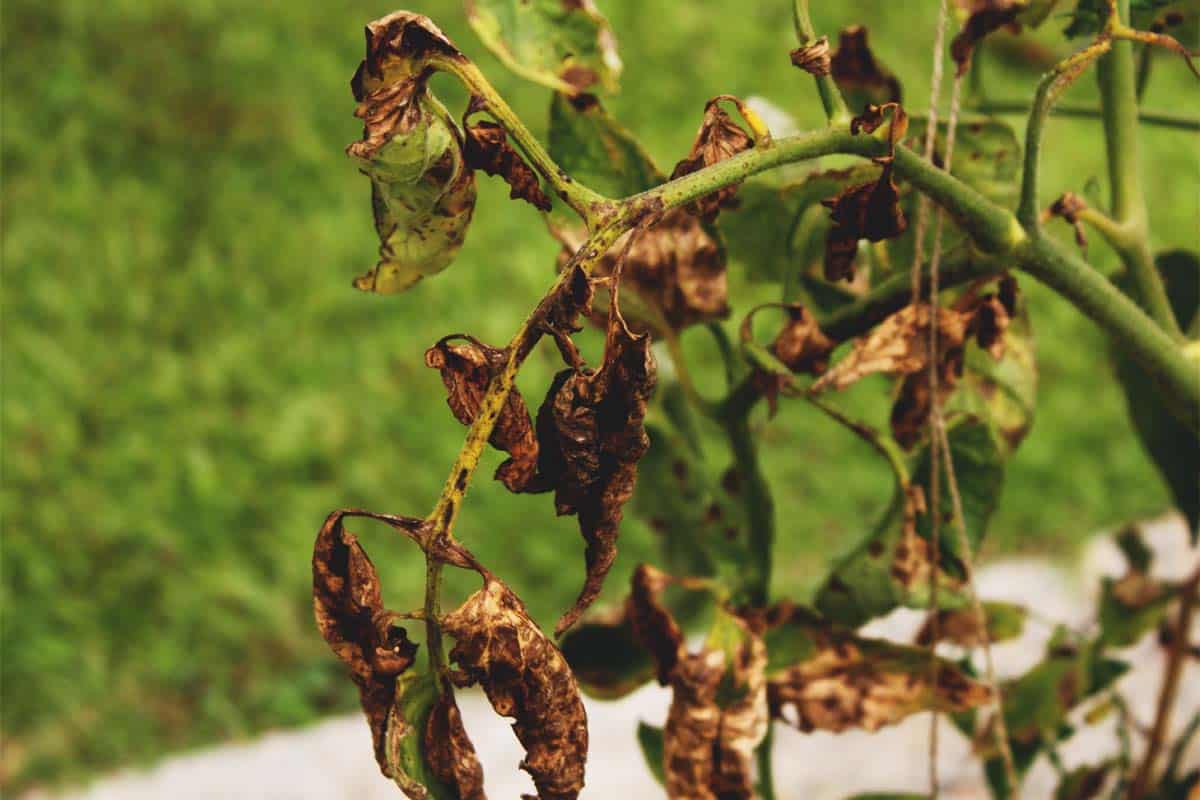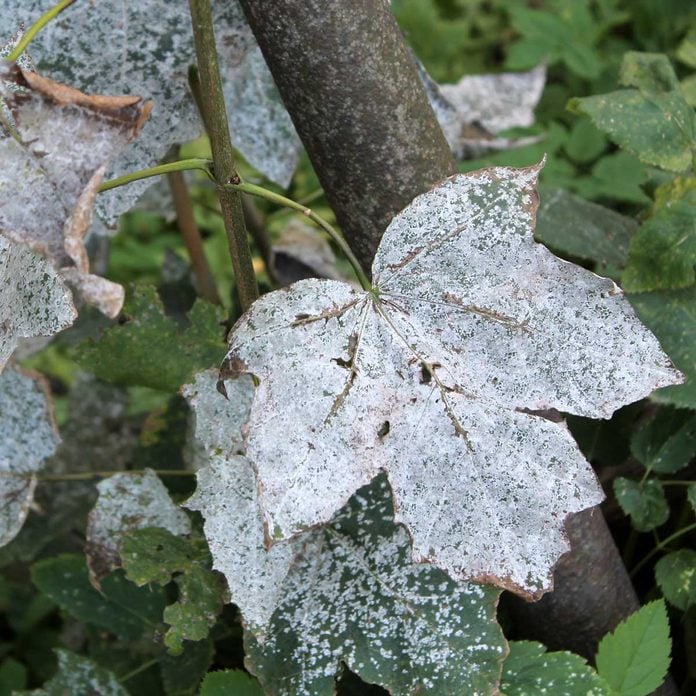Wilt: A Garden’s Silent Killer – Understanding, Preventing, and Treating Plant Disease

Wilt, a common and devastating plant disease, is characterized by the drooping and eventual death of leaves, stems, and even entire plants. It’s a symptom, rather than a disease itself, indicating that something is disrupting the plant’s vascular system, preventing it from transporting water and nutrients effectively. While a sad sight for any gardener, understanding the underlying causes of wilt and implementing preventative measures can help protect your precious plants from this silent killer.
The Mechanics of Wilt: A Blockage in the System
Imagine the vascular system of a plant as a network of tiny pipes. These "pipes," called xylem and phloem, transport water and nutrients from the roots to the leaves and from the leaves back to the roots, respectively. Wilt occurs when something interferes with this vital transportation process, typically within the xylem.
Several factors can cause this interference, including:
- Pathogenic Organisms: The most common culprits are fungi, bacteria, and nematodes that invade the plant’s vascular system. These pathogens multiply within the xylem, physically blocking the flow of water. They can also release toxins that further damage the vascular tissue.
- Environmental Stress: Inadequate watering, excessive heat, root damage, and soil compaction can all stress plants, making them more susceptible to wilt. These stressors can damage the plant’s ability to absorb and transport water efficiently.
- Physical Damage: Physical damage to the roots or stem, such as from transplanting, insects, or accidental injury, can disrupt the vascular system and lead to wilt.
- Nutrient Deficiencies: Certain nutrient deficiencies, particularly potassium, can weaken the plant’s cell walls and make it more vulnerable to wilt.

Common Culprits: Fungal, Bacterial, and Nematode Wilts
While various factors can contribute to wilt, certain pathogens are particularly notorious for causing widespread plant death. Understanding these common culprits is crucial for effective diagnosis and treatment.
- Fusarium Wilt: Caused by various species of the fungus Fusarium, this is one of the most prevalent and destructive wilts. Fusarium fungi live in the soil and enter the plant through the roots. They then invade the xylem, blocking water flow and releasing toxins. Symptoms include yellowing of leaves, often starting on one side of the plant, followed by wilting and eventual death. A characteristic symptom is a brown discoloration of the vascular tissue when the stem is cut open. Tomatoes, peppers, potatoes, and melons are particularly susceptible.
- Verticillium Wilt: Similar to Fusarium wilt, Verticillium wilt is caused by Verticillium fungi that reside in the soil. The fungi enter the plant through the roots and block the xylem vessels. Symptoms are also similar to Fusarium wilt, including yellowing, wilting, and stunting. A key difference is that Verticillium wilt often causes a mottled or blotchy appearance on the leaves. Tomatoes, strawberries, eggplant, and many ornamental plants are vulnerable.
- Bacterial Wilt: Caused by various bacteria, such as Ralstonia solanacearum, bacterial wilt is particularly devastating in warm, humid climates. The bacteria enter the plant through wounds in the roots and multiply rapidly in the xylem, blocking water flow. Symptoms include rapid wilting, even when the soil is moist, and a slimy, milky ooze from cut stems. Tomatoes, peppers, eggplant, and potatoes are highly susceptible.
- Nematode Wilt: Certain species of nematodes, microscopic roundworms that live in the soil, can attack plant roots and disrupt water uptake. Root-knot nematodes, for example, cause galls or swellings on the roots, interfering with nutrient and water absorption. This can lead to wilting, stunting, and reduced yields.

Identifying Wilt: Recognizing the Signs
Early detection is crucial for managing wilt effectively. Look for the following signs:

- Drooping Leaves: This is the most obvious symptom. Leaves may initially droop during the hottest part of the day and recover overnight, but as the disease progresses, the wilting becomes permanent.
- Yellowing Leaves: Leaves may turn yellow, often starting with the lower leaves, before wilting.
- Stunted Growth: Affected plants may exhibit stunted growth and reduced yields.
- Discoloration of Vascular Tissue: Cutting open the stem of an affected plant may reveal a brown or discolored ring in the vascular tissue.
- Slimy Ooze: In cases of bacterial wilt, a slimy, milky ooze may be visible when the stem is cut.
- Root Galls: If nematodes are the cause, look for galls or swellings on the roots.
Preventing Wilt: A Proactive Approach
Prevention is always better than cure when it comes to wilt. Implementing the following strategies can significantly reduce the risk of your plants contracting this devastating disease:
- Choose Resistant Varieties: Select plant varieties that are resistant to common wilt diseases, such as Fusarium and Verticillium wilt. Seed packets and plant labels often indicate disease resistance.
- Healthy Soil: Ensure your soil is well-draining and rich in organic matter. Good soil health promotes strong root growth and makes plants more resilient to disease.
- Proper Watering: Water deeply and infrequently, allowing the soil to dry slightly between waterings. Avoid overwatering, which can create conditions favorable for fungal growth.
- Crop Rotation: Rotate crops annually to prevent the buildup of soilborne pathogens. Avoid planting susceptible plants in the same location year after year.
- Sanitation: Practice good garden sanitation by removing and destroying infected plant debris. Clean tools and equipment regularly to prevent the spread of pathogens.
- Soil Solarization: In areas with hot summers, soil solarization can help to kill soilborne pathogens. Cover the soil with clear plastic for several weeks during the hottest part of the year.
- Grafting: Grafting susceptible varieties onto resistant rootstocks can provide protection against wilt diseases. This is a common practice for tomatoes and other vegetables.
- Avoid Root Damage: Be careful when transplanting and cultivating around plants to avoid damaging the roots.
- Beneficial Microorganisms: Introduce beneficial microorganisms to the soil, such as mycorrhizal fungi and Bacillus bacteria, which can help to suppress pathogens and improve plant health.
Treating Wilt: A Difficult Challenge
Treating wilt can be challenging, especially once the disease is advanced. However, the following measures may help to slow the spread of the disease and improve the plant’s chances of survival:
- Identify the Cause: Accurate diagnosis is crucial for effective treatment. If possible, send a sample of the affected plant to a plant disease diagnostic lab for identification.
- Remove and Destroy Infected Plants: Promptly remove and destroy infected plants to prevent the spread of the disease to other plants. Do not compost infected plant material.
- Improve Soil Drainage: If the soil is poorly draining, improve drainage by adding organic matter or installing drainage tiles.
- Fungicides and Bactericides: While fungicides and bactericides can sometimes be effective in controlling wilt diseases, they are often not a cure. They are most effective when applied preventatively or at the very early stages of the disease. Consult with a local extension agent or plant pathologist for recommendations on appropriate products.
- Soil Fumigation: Soil fumigation can be used to kill soilborne pathogens, but it is a drastic measure that can also harm beneficial microorganisms. It is typically used only in commercial agriculture.
- Solarization: As mentioned earlier, soil solarization can help to kill soilborne pathogens.
- Supportive Care: Provide supportive care to affected plants by watering them regularly, fertilizing them with a balanced fertilizer, and protecting them from stress.
Frequently Asked Questions (FAQ)
- Q: My plant is wilting even though the soil is moist. What could be the problem?
- A: This is a common symptom of vascular wilt diseases. The pathogens block the plant’s ability to absorb water, even when it is readily available in the soil. Other possibilities include root rot or root damage.
- Q: Can I save a plant that has wilt?
- A: It depends on the severity of the disease and the underlying cause. Early detection and prompt treatment can sometimes save a plant, but advanced cases are often fatal.
- Q: Is wilt contagious?
- A: Yes, many wilt diseases are contagious and can spread from plant to plant through contaminated soil, water, or tools.
- Q: How do I know if my soil is infested with wilt pathogens?
- A: Soil testing can help to identify the presence of certain wilt pathogens, but it is not always accurate. A history of wilt problems in your garden is a good indication that your soil may be infested.
- Q: Can I use the same soil to plant again after a plant has died of wilt?
- A: It is best to avoid planting susceptible plants in the same soil, especially if the plant died from a soilborne wilt disease. Consider replacing the soil or using soil solarization.
Conclusion: A Continuous Vigilance
Wilt is a complex and challenging plant disease that can devastate gardens and crops. Understanding the causes, recognizing the symptoms, and implementing preventative measures are crucial for protecting your plants. While treatment options are limited, early detection and supportive care can sometimes help to improve the plant’s chances of survival. By practicing good gardening hygiene, choosing resistant varieties, and maintaining healthy soil, you can significantly reduce the risk of wilt and enjoy a thriving garden. Remember that vigilance and proactive management are key to combating this silent killer.
